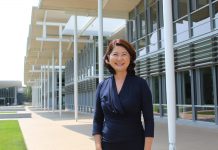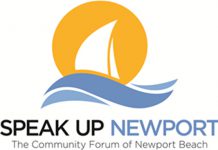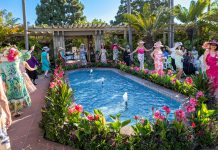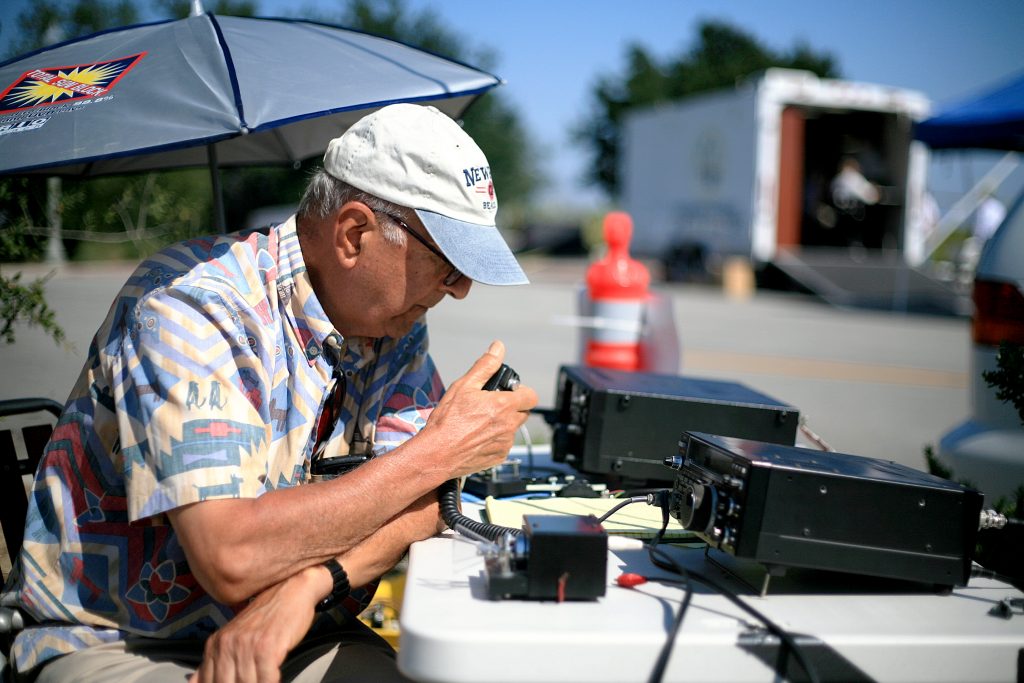
— Photo by Sara Hall ©
Morse code and radio messages from all over the world were received loud and clear over the weekend by a group of volunteers at Coastal Peak Park as part of a nationwide event.
Messages from as far as Belgium came in as volunteers from Newport Beach Radio Amateur Civil Emergency Service participated in the annual American Radio Relay League Field Day on Saturday.
The objective of the nationwide exercise is for ham radio operators to work as many stations as possible on any and all amateur bands and to learn to operate in abnormal situations in less than optimal conditions, according to the ARRL website.
ARRL Field Day is the most popular on-air event held annually in the US and Canada.
More than 35,000 radio amateurs compete in a contest to communicate with as many stations as they can around the country and the world.
Locally, the RACES group participates in the event for more than just competition.
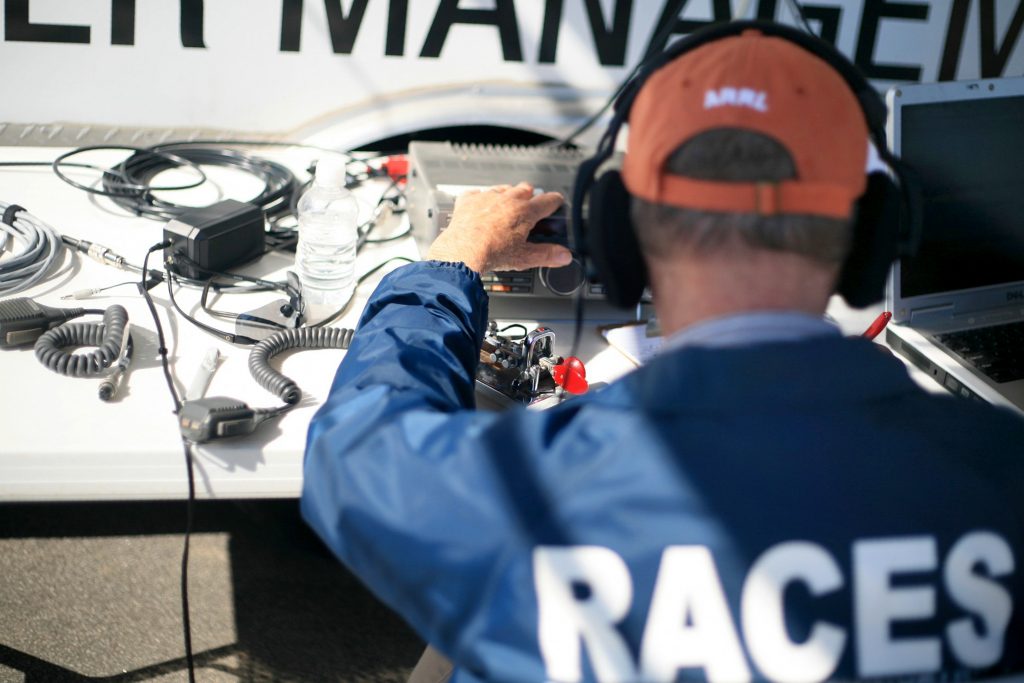
— Photo by Sara Hall ©
“In addition to the contest, what’s really important is that it gets us out in the field to test our equipment, test our trailer, test our set-up skills so that we’re not rusty if we have to do it for real,” said Newport Beach RACES Chief Radio Officer, Gary Standard.
RACES is organized to provide backup and supplementary communication to the police department in an emergency or disaster.
It’s best to be prepared, said longtime RACES member, Roy Shlemon.
“The idea is to set up emergency communications…. in the event of a disaster,” Shlemon said. “In our case, (likely) an earthquake or tsunami.”
And have fun, of course, he added.
The group has had 175 people graduate from their ham radio classes, which are held once a year. Several members of the NB Fire Department’s Community Emergency Response Team have participated.
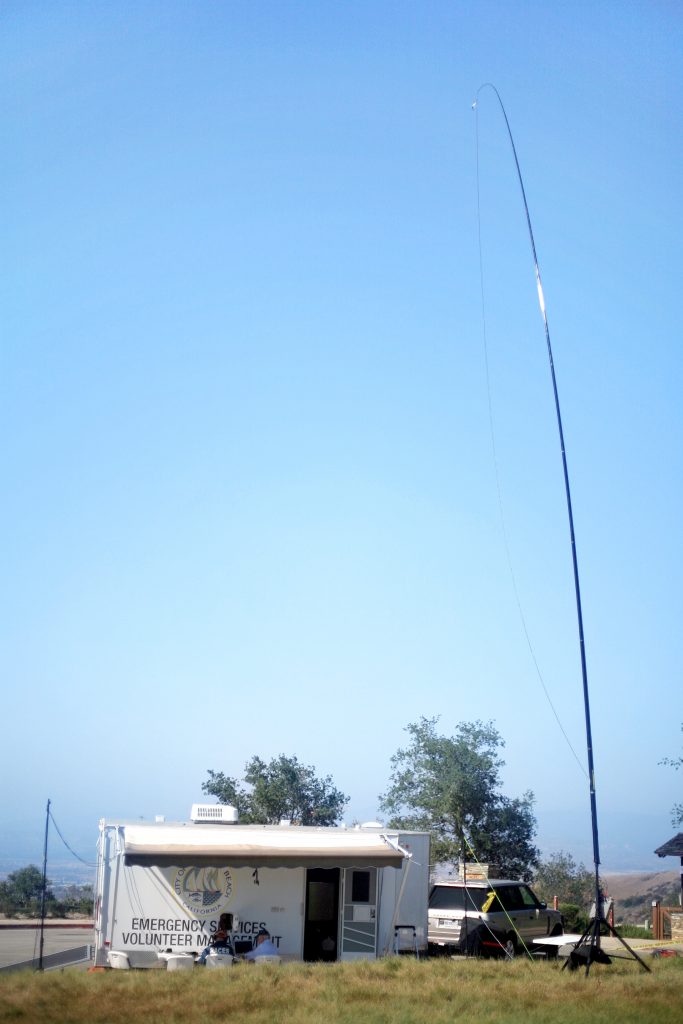
— Photo by Sara Hall ©
“We have a very robust communications group,” Standard said.
Newport Beach RACES officially began in 1988, noted the group’s original Chief Radio Officer and current member, Jim Robertson.
Many of the RACES operators have been doing it for many years, but the CERT communicators often never worked a radio before the class, Standard pointed out. People of all ages, backgrounds, and levels of experience can do it.
“It’s a good (skill) to have,” Standard said.
About 20 RACES members participated in the Field Day over the weekend.
The group set up the Newport Beach Emergency Radio trailer, with multiple radios and external antennas, in the cul-de-sac at the end of Ridge Park Road at the Park. There were four stations set up and locals were contacting other ham radio operators around the world.
They make contact, acknowledge each other’s call letters (Newport Beach RACES group is K6NBR) and then move on, Standard explained.
“Kilo Six November Bravo Romeo,” an operator said into the microphone.
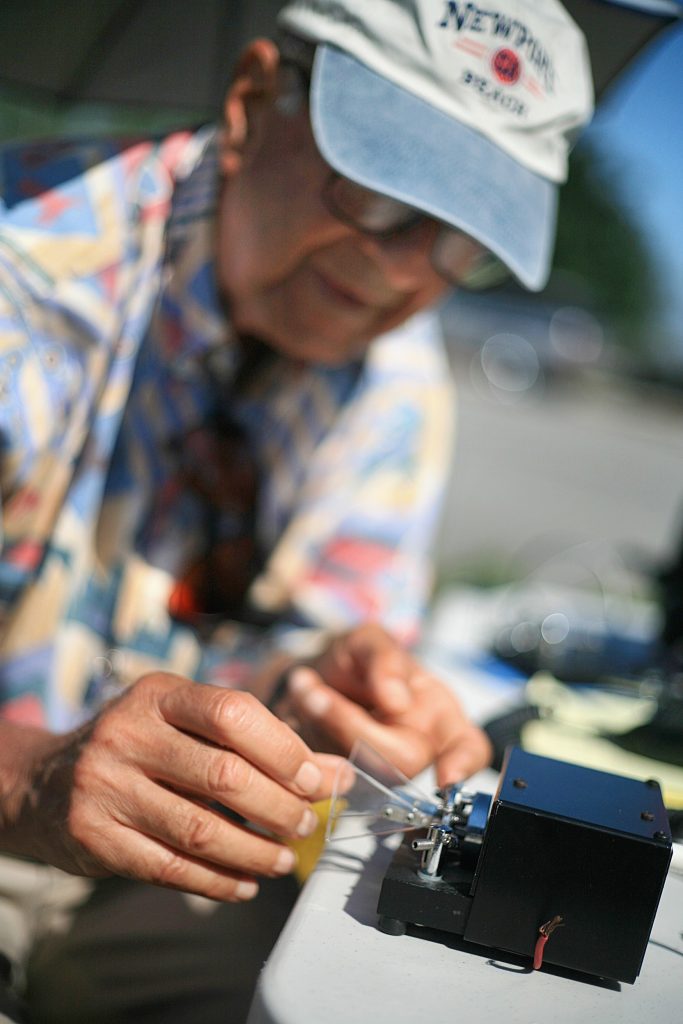
— Photo by Sara Hall ©
After some static a voice responded, first repeating back the code then providing his information: “Kilo Six Tango Uniform Oscar, class five alpha section SJV, San Joaquin Valley.”
They carefully log every contact and tally them up at the end of the event. The Newport Beach group made 209 contacts over the weekend.
Another original member of the group, Bob Carlson, connected with the Belgium United Nations by Morse code on Saturday.
It came in loud and clear, he said, which surprised him.
He spoke with someone in Mali, Africa, during the event a few years ago.
But neither of those messages was the furthest he had ever sent.
“I’ve talked to myself,” Carlson said, half jokingly.
In the late 1950s, not long after he started learning the skill, there was an “incredible radio phenomenon where you could literally talk around the world by ‘rubbing a few wires together,’” Carlson said.

— Photo by Sara Hall ©
He got on the microphone, transmitted a message, and then shut off. A few seconds later he heard his own voice.
“It had gone clear around the world and back into my receiver,” he said.
Carlson had connected with about 50 people Saturday morning through voice and code.
By about 3 p.m. on Saturday, Shlemon, who operates primarily by code, had also made about 50 contacts. His ranged all across the country, including Hawaii and the East Coast.
He worked mostly with his own “stacked” antenna with very high frequency band strapped to his small table. His radio was hooked up to a car battery, which was being powered by a solar panel. The arrangement would be easy to set up and last as long as the sun was out, which would be helpful in an emergency. In a pinch, Shlemon could even hang wires from trees and be able to communicate.
A disaster would likely knock out most people’s communication systems, like cell phones and internet, so a ham radio (and the skills and know-how needed in order to use it) would be incredibly useful.
“We hope we’re never needed,” Carlson added, “but it’s good to be ready.”
For more information, visit nbpd.org/programs/races_program.asp and arrl.org/field-day.
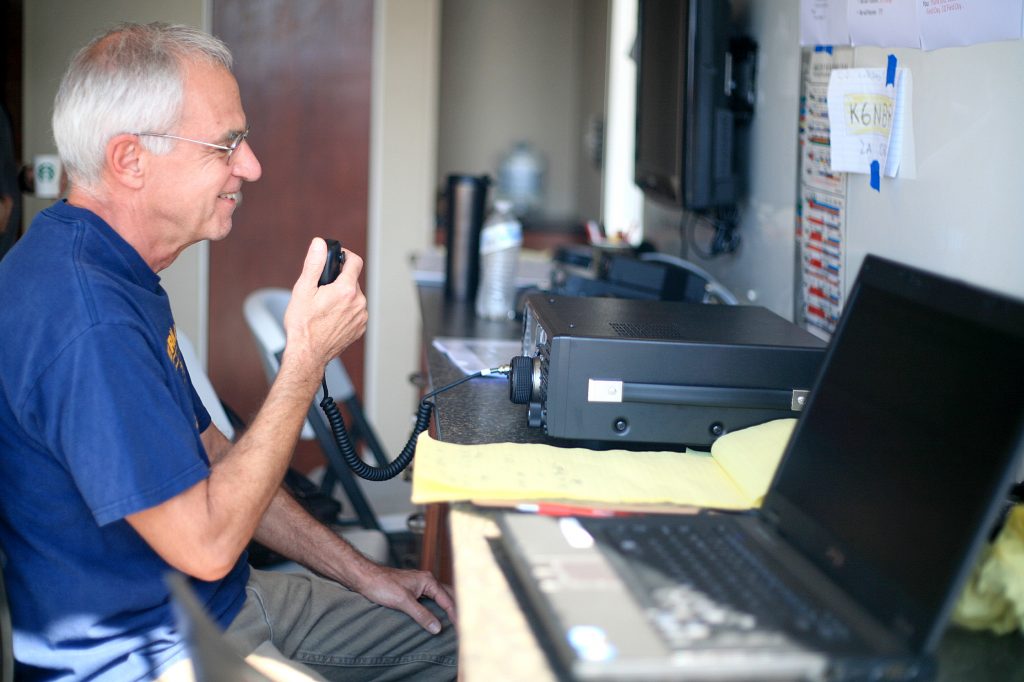
— Photo by Sara Hall ©
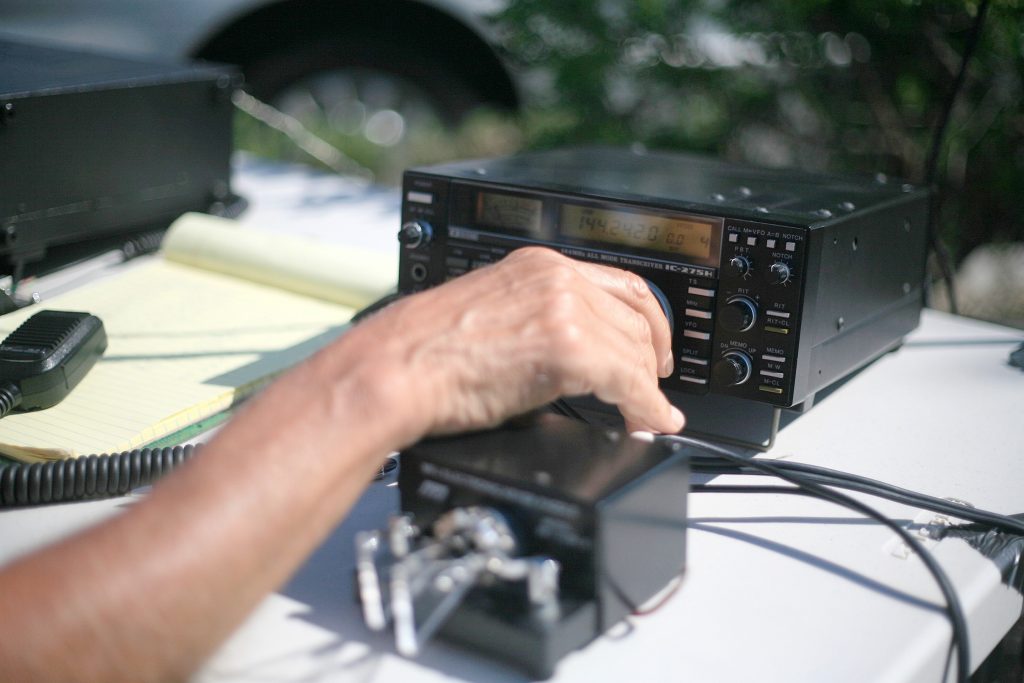
— Photo by Sara Hall ©
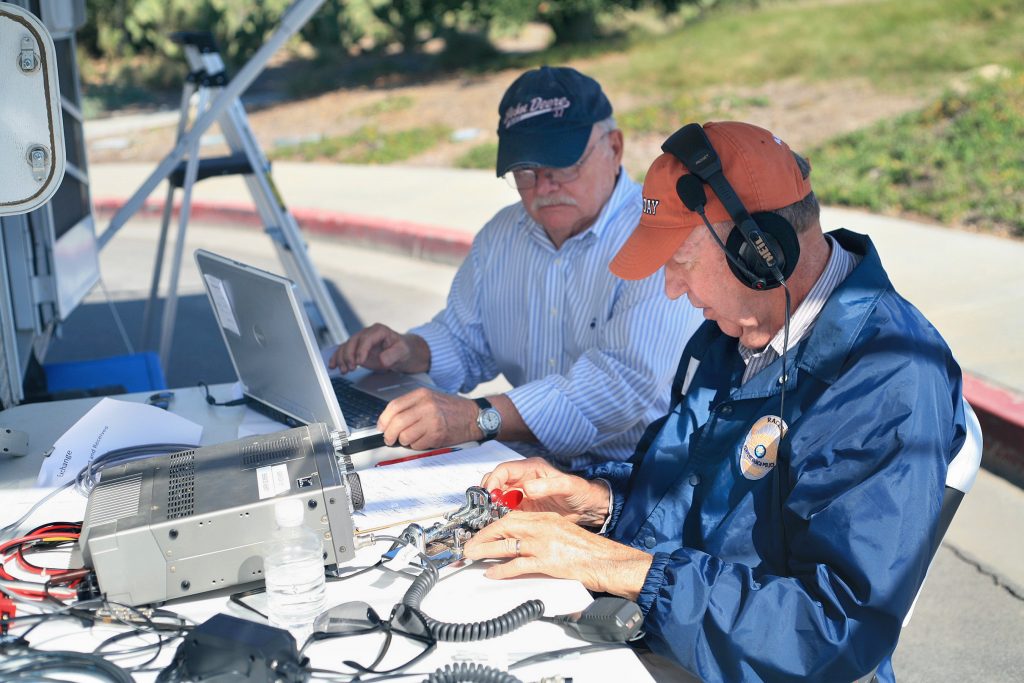
— Photo by Sara Hall ©


